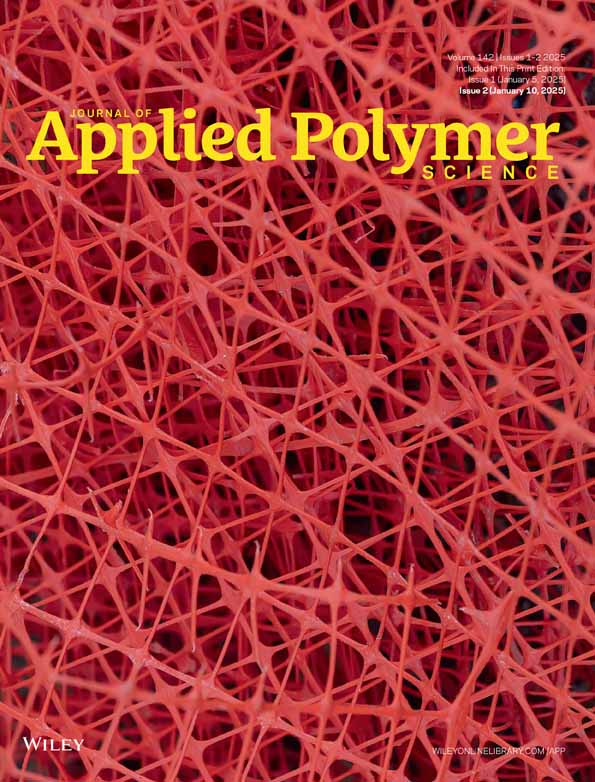Polyurethane nanocomposites from 4-bromo-1H-pyrazole-blocked-diisocyanates
Abstract
In this paper, we report various polyurethane nanocomposites of single-walled carbon nanotubes using blocking–deblocking reactions. Thus, the synthesis was carried out using blocked isocyanates where, at deblocking temperature, isocyanates regenerated and reacted with polyol (PEG-400) and single-walled carbon nanotubes (SWCNTs) to form polyurethane nanocomposites. For example, at 185°C, regenerated (deblocked) hexamethylene diisocyanates was reacted with polyethylene glycol-400 and SWCNT to form polyurethane nanocomposites. Similarly, at 238°C, regenerated (deblocked) toluene diisocyanates was reacted with polyethylene glycol-400 and SWCNT to form polyurethane nanocomposites. The characterization of synthesized polyurethane nanocomposites has been done by Fourier transform infrared spectroscopy, nuclear magnetic resonance, thermogravimetric analysis, differential scanning calorimetry, field emission scanning electron microscopy, High resolution transmission electron microscopy and contact angle measurement.
Open Research
DATA AVAILABILITY STATEMENT
The data that support the findings of this study are available in the supplementary material of this article.




